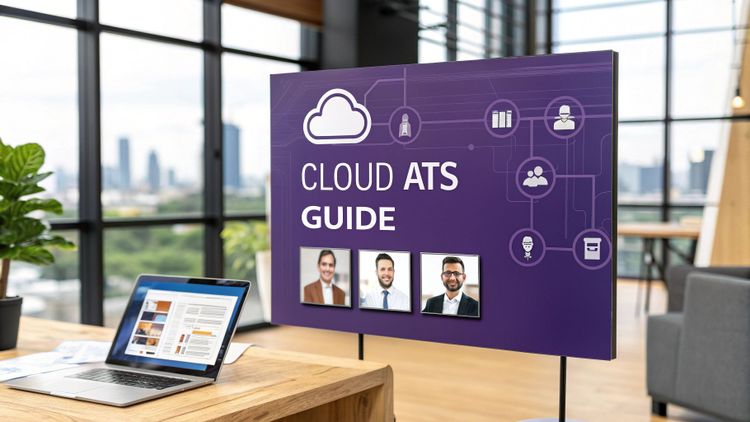Industry Trends
A Brief Guide to Hiring Remote Workers in 2022

It seems only yesterday that WFH setups started becoming mainstream in companies worldwide, but one thing is obvious: remote work is here to stay.
Although it’s been around for quite some time now, there was never a time prior to the pandemic that remote work was considered essential. With ever-changing guidelines and public health concerns, however, businesses were forced to adopt new measures to continue operations – including remote work.
As a result, companies are now trying to implement the new recruitment practices in hiring remote workers.
In this article, we’ll discuss why you should consider hiring for remote work, where to find candidates, and what qualities to look out for in the best remote workers.
Let’s dive in.

Benefits of Hiring Remote Workers
Remote workers are people who work for your company completely or partially online.
Their numbers have been increasing these last few years, doing tasks that can be done through computers and require minimal personal interactions, such as programming and design.
However, the pandemic has forced companies to consider remote work, even for tasks that were traditionally thought to require face-to-face interactions. In a pre-pandemic landscape, working from home was not considered a practical solution for most types of jobs.
Today, many UK workers across various industries have found ways to work from home.
In fact, a significant percentage would like to continue doing remote work even after the pandemic. According to research by Vox EU, only 21% of respondents wanted to work from home “rarely or never.” 79% were open to working anywhere from 1-5 days a week from home.

Respondents were asked how often they would like to have paid workdays at home. © Vox EU
Surprisingly – or perhaps unsurprisingly – remote work is turning out to be a beneficial setup for both employees and employers alike.
Here are a few benefits of hiring remote workers for your company:
- Decreased overhead. One of the most basic arguments in favour of remote work is the decreased overhead cost. The loss of personal office time saves companies expenses for electricity, maintenance, rent, and more, leading to increased profitability on the part of employers.
- Increased employee productivity. Employees report themselves to be more productive while working from home, although some of them struggle with not being able to meet coworkers.
- Wider talent pool. Now that certain jobs or aspects of work can be done completely online, companies have no more reason to limit their hires to candidates living in the same city or who are willing to relocate. Instead, employers have started competing for an international, diverse pool of talent.
Of course, remote work is not perfect by any stretch of the word. Going forward, it’s more likely for workplaces to implement a flexible mixture of both in-office and remote work for some jobs.
However, it’s turning out better than expected, and as such, we need to find a way to leverage this novel way of work.
How to Source Remote Workers
Now that you know why you should consider hiring remote workers, it’s time to discuss how to find and hire them.
1. Design your remote work policy
Before you can start attracting applicants, you first need to define your remote work policy.
This is a document which defines which roles can be remote and the related details like new hiring procedures, benefits, tools for working remotely and so on.
This is all the more important for remote workers, most of whom will likely not have any contact with your company other than virtual meetings.
Here are some of the key points to consider when creating your remote work policy:
- Determine who is eligible for the policy.
- Ensure that you have detailed write-ups about the purpose and scope of your policy.
- Create clear guidelines about the working setup.
- Hash out all legal considerations, including taxation, benefits, etc.
- Establish and properly communicate working expectations.
- Create collaboration schedules between you and your workers.
- Provide essential tools and software needed to support remote work.
- Prepare clear avenues for support.
- Be explicit about payment and benefits.
2. Attract applicants
Now that you have a solid remote work policy in place, the next step is spreading the word about your vacancies to attract applicants.
While companies previously used to source potential applicants based on location, you now have the option to look farther away and attract applicants from a diverse range of countries and backgrounds.
Here are a few places where you can spread the word about your remote job vacancy.
- Freelancing sites. A healthy economy of freelancing and remote work has been around for some time. Don’t hesitate to use platforms like Freelancer, Upwork, or Fiverr to find potential candidates or support with one-off projects.
- Remote-first job boards. Some job boards are made specifically to connect remote workers to potential employers. One example is We Work Remotely, which shows hundreds of job ads for remote full-time, part-time, and contractual positions all over the world.
- Social media. This includes the usual platforms like LinkedIn, Facebook, and Instagram, but it also goes beyond that. Pay attention to niche platforms like Reddit, GitHub, or Quora, where you can expand your network and engage with a targeted audience like open-source Java developers.
- Your careers page. Regardless of where you find your candidates, there’s a big chance they will visit your website once they hear about the job opportunity. Make sure to create a professional and engaging careers page to hook them in.
2. Shortlisting
The shortlisting process usually involves intensive evaluations and pre-assessments of the candidates’ qualifications and skills. While it’s not too different, here’s are a few ways to adapt this process to remote hiring:
- Set your priorities. Determine what qualities are critical for the job, whether it's a candidate’s soft skills, interview results, technical skills, etc. Hiring remotely often means more candidates so you need a clear and fast way to sift through applications.
- Determine a limit. You should already decide early on how many candidates will proceed to the shortlist. This helps you narrow your focus and see which candidate is truly the best for the job.
- Filter out inattentive candidates. This could be something as simple as “add the word orange in your application,” included near the end of the job post to make sure only people who read the description make it through.
- Use blind shortlisting. You’re likely to receive applications from people with diverse backgrounds and nationalities. It’s common for unconscious biases to kick in so consider masking candidate personal data and focus purely on their skills and experience. SeeMeHired, for example, has a built-in D&I module that does this automtically.
3. Interviewing
Interviews are a crucial process in any recruitment effort.
Before the pandemic, employers typically preferred personal interviews to virtual and telephone interviews. The former was said to help better assess the abilities, character, and temperament of the candidate.
While that remains true today for in-office positions, it doesn’t apply to remote jobs. When hiring remote workers, there are times when you have no choice but to interview them virtually.
Of course, this doesn’t mean that the quality of your interviews should suffer. With the aid of the right tools, virtual interviewing can become a cinch and can even be a better gauge of character than a personal meeting.
Here are a few software tools that you should have in your arsenal when conducting remote interviews.
- Video conferencing platform: Video conferencing tools like Zoom or Microsoft Teams are a must if you want to conduct effective interviews online.
- Scheduling platform: This can happen through your calendar apps like Google Calendar or Outlook. You can also use talent acquisition software to offer candidates specific time slots.
- Document collaboration system: If you want to share documents or conduct a test, you should use a tool that will allow you to collaborate with teammates. Google Drive or Sharepoint are good examples of this.
- Remote employment integration platform: This type of platform, like Remote, for instance, should allow you to merge your work systems, financing, legal matters, and more to meet international and national standards no matter where you’re recruiting from.
4. Trials
If hiring for a crucial position, you can go the extra mile and see if your candidates will walk the talk. Assessment trials are paid tasks that act like an internship or probation period where the employees can contribute productively while being evaluated for the final position.
Conducting trial runs like this in person might have been costly and inefficient, but now that you’re operating remotely, it’s much easier to conduct trial runs. Simply have your employees complete a non-crucial yet productive task for a specified period, with the requisite pay.
Why conduct trial runs? Here are a couple of reasons that might persuade you.
- Assess company fit. The primary argument for conducting trial runs. By doing a paid trial, you can better assess a candidate’s work ethic and output quality in real-world scenarios.
- Evaluate potential problems with tools and software fit. Things like proficiency in certain software or tools, your candidate’s tools of the trade, and the quality of their workspace might not come up during the interview.
- Determine communication style. Communication is essential during remote work, and you have to see which candidate best fits the communication style of your management.
Qualities to Look Out For in the Best Remote Workers
Everyone can work remotely, but not everyone can be good at it. To know which applicants have what it takes to thrive in a remote setting, be on the lookout for the following qualities.
- Independence. Working remotely means that you can’t directly supervise and motivate your employees. Thus, they need to be able to do it themselves. Despite the limited supervision that remote work can afford, they should still be productive.
- Results-oriented. Limited supervision means your remote hires must be able to priortise and focus on outcomes rather than the time spent at their desk.
- Communicative. In this type of setup, communication is everything. Look out for applicants who know how to communicate clearly and to the point, not just in the interview but also in emails and other forms of communication.
- Organised. This work type will deal with plenty of electronic files, documents, links, etc. Someone who has a system for keeping their digital life in sync would potentially be a good fit for a remote role.
- Flexible. Remote work deals with many moving parts, from personal work hours to international time zone differences. It’s best to find a candidate who can quickly adapt to the demands of the situation.
Hiring Remote Workers in 2022
Remote work will be an even bigger part of the employment landscape going forward.
Now you know the benefits of hiring remote workers, how to source them, as well as the qualities to look out for in a remote employee.
We hope this guide will help you better prepare and design your hiring practices to meet the growing remote work trend and thrive because of it.
Want to take your remote hiring to the next level? Streamline your recruitment with SeeMeHired today - book your free demo to get started.































